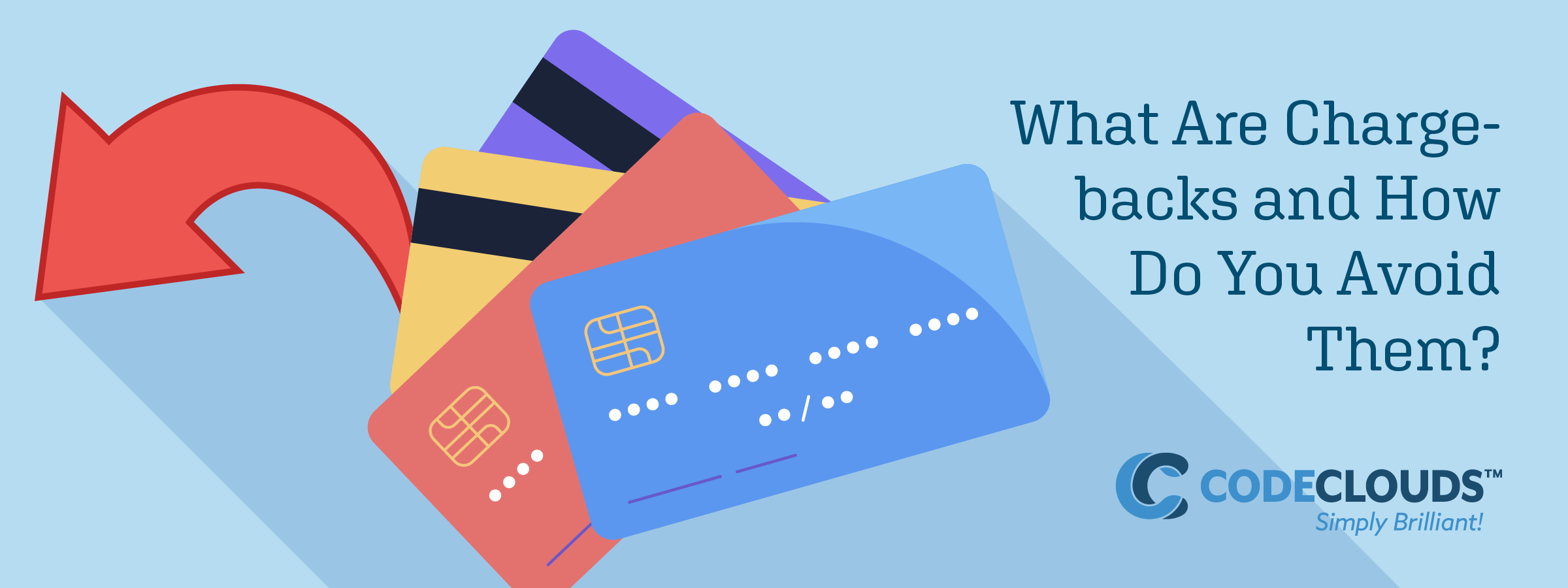Overview
Where would e-commerce be without credit cards and debit cards? No other way to make electronic payments is as widely used and familiar to customers. Customers are also well aware that sensitive data like payment card credentials aren't very safe or secure on the internet, which is why it's important for them to know that they always have recourse when they get defrauded: they can ask their bank for a chargeback.
Chargebacks make a bad situation right for the customer by rolling back the transaction and returning the funds to their account. For merchants, chargebacks represent lost revenue and a host of other potential problems. Chargebacks may be a necessary part of a healthy digital payments ecosystem, but merchants need to protect themselves by making a concerted effort to avoid them. 

What Are Chargebacks?
Cardholders have the right to dispute charges to their account that are fraudulent or erroneous. When the cardholder's bank hears their dispute and decides that they have a valid claim, they can take the transaction funds back from the merchant account and return them to the cardholder. This is a chargeback.
Chargeback rights were created by the Fair Credit Billing Act of 1974, which sought to protect cardholders from fraud and preserve confidence in the still-young credit card industry. Visa, Mastercard, and the other big card networks use the FCBA as the basis to create policies for how and when the banks that issue cards under their brands must grant chargebacks. These policies are updated frequently to account for changes in technology, emergent fraud schemes, and shifts in customer behavior.
According to the law, cardholders can be granted chargebacks when charges are made without their authorization, when they are defrauded by a merchant, or when they are billed incorrectly.
What's So Bad About Chargebacks, Anyway?
When a merchant gets hit with a chargeback, the disputed funds are forcibly removed from their account. That's not something any merchant would want, but on the face of it, it doesn't appear to be much worse than losing revenue by giving somebody a refund. Why not just write chargebacks off as yet another cost of doing business and focus on other things?
In truth, a chargeback will always cost much more than a comparable refund. Chargebacks require acknowledgment, research, and other forms of management that take up staff time. They also come with chargeback fees, which can be expensive. By some estimates, a typical chargeback can cost more than double the original transaction amount.
The worst thing about chargebacks isn't the price tag, though. It's the fact that too many chargebacks can cause you to lose your merchant account. The card networks consider chargebacks to be indicative of bad customer experiences and therefore bad for the health of the industry, so they track chargebacks and penalize merchants who receive an excessive amount. The penalties may start with fines and action plans, but the final escalation is account termination and placement on an industry blacklist.
The Chargeback Process
- The cardholder sees a charge that they didn't authorize or that they don't think they should have to pay for other reasons (for example, they never received what they paid for).
- The cardholder contacts their bank, which reviews their claim and sees if the facts of the dispute match a valid chargeback reason code.
- If the dispute seems to be valid, the chargeback will be granted and assigned a reason code. The issuing bank will credit their cardholder for the disputed funds.
- Next, the issuer will take back the funds from the merchant account, notifying the acquiring bank. The acquirer will inform the merchant about the chargeback, and the merchant can decide whether to accept the chargeback or try to fight it.
- If the chargeback is accepted, the cardholder's credit becomes permanent and the chargeback process ends.
- If, however, the merchant decides to fight the chargeback, the process may continue until a final decision is reached.
How to Fight Chargebacks?
Merchants can fight chargebacks by submitting a second presentment of the transaction along with evidence proving that the cardholder's claims are not a valid basis for a chargeback.
From a merchant perspective, there are three types of chargebacks: true fraud, merchant error, and friendly fraud. Actual true fraud and merchant error chargebacks will be valid, and merchants can't fight and win against valid chargebacks. Friendly fraud, however, refers to any chargeback where the cardholder's claims are false, made-up, or erroneous. Merchants should always fight fraudulent chargebacks, and with the right evidence, you can win.
Each chargeback reason code has specific criteria for validity and guidelines for what kind of evidence merchants should submit to prove their case. When merchants submit a chargeback representment package, the evidence needs to convince the issuer that they made a mistake by allowing the chargeback in the first place.
If either party is unhappy with the issuer's decision after this point, the dispute can be appealed all the way up to the card network.
How to Prevent Chargebacks From Happening in the First Place?
Fighting chargebacks is important. It gets you your revenue back and demonstrates that you aren't an easy target for chargeback fraud. However, it still takes time and doesn't erase all of the negative aspects of chargebacks. The best strategy is to avoid chargebacks entirely by preventing as many of them as possible.
No two merchants are alike, and there are dozens of reason codes, so there's no one-size-fits-all solution for chargeback management. The key to developing an effective strategy is to look at your raw transaction data and analyze it to find out where your chargebacks are really coming from.
Once you understand the real root causes of your chargebacks, you can start coming up with effective ways to prevent them from reoccurring. Merchant error chargebacks can usually be eliminated with training and policy changes. True fraud is trickier, but the right tools can help mitigate it. Chargeback management is a lot of work, and many merchants benefit from getting some outside assistance. No matter how you go about it, it's necessary for self-preservation as a credit-card-accepting merchant in today's e-commerce landscape.

Suresh Dakshina
Suresh Dakshina is the President and cofounder of Chargeback Gurus. He is a certified e-commerce fraud prevention specialist and a certified payments professional and certified chargeback management professional who knows first-hand the challenges business owners face, especially when it comes to chargebacks and fraud. Suresh holds a Master’s degree from the University of Southern California and has consulted Fortune 5000 companies for over a decade on chargeback and fraud minimization. Suresh Dakshina is a veteran speaker and works closely with card networks such as Visa and American Express on chargeback process optimization, and compelling evidence policies.
Share this article
156 reads
Similar Reads








